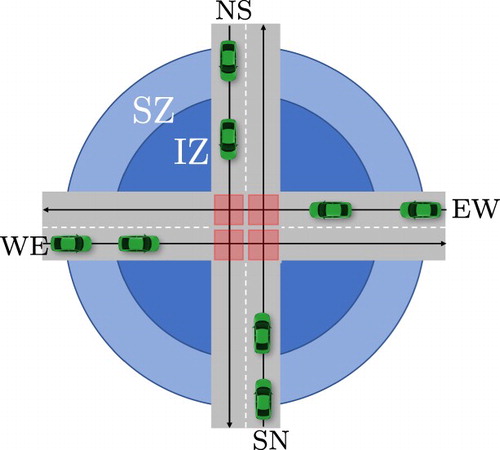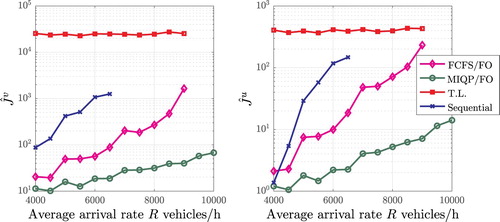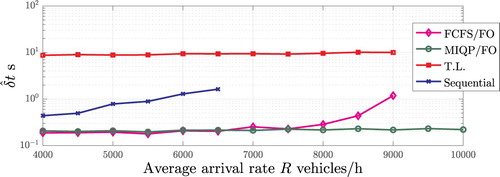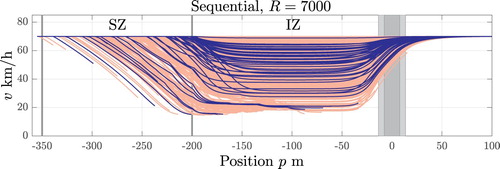Figures & data
Figure 1. Illustrations of collision avoidance conditions. (a) Illustration of Assumption 2.2 and the Conflict Zones (red boxes); (b) scheme of the SICA condition (Equation3(3)
(3) ):
shown as boxes around the vehicles and (c) conservativeness induced by rectangular outer approximations.
![Figure 1. Illustrations of collision avoidance conditions. (a) Illustration of Assumption 2.2 and the Conflict Zones (red boxes); (b) scheme of the SICA condition (Equation3(3) (xi(t),xj(t))∉B^r,ij={(xi,xj)|pi∈[pr,iin,pr,iout],pj∈[pr,jin,pr,jout]},(3) ): G^i(pi(t)) shown as boxes around the vehicles and (c) conservativeness induced by rectangular outer approximations.](/cms/asset/71cd6512-b03f-4d03-90ca-e4e897752f80/nvsd_a_1755446_f0001_oc.jpg)
Table 1. General parameters.
Table 2. Vehicle parameters.
Figure 4. Energy cost of coordination: percentage increase (solid line, right axis); and CoC increase
(pale lines, left axis). Colour coding as in Figure .
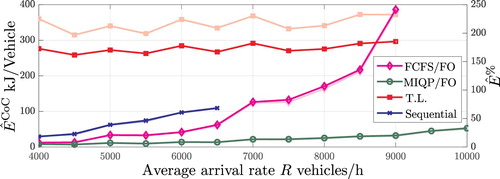
Figure 7. Average velocity (coloured lines) and velocity intervals (grey surface) in a scenario with R = 6000 vehicles/hour.
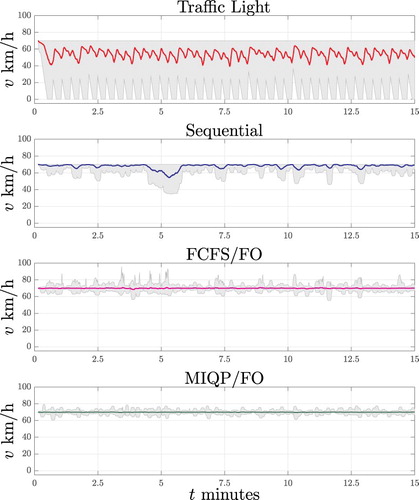
Figure 8. Position-velocity trajectories of one vehicle from the scenario with R = 6000 vehicles/hour. The grey bar corresponds to positions inside the intersection, 0 being the centre, whereas the grey line demarcates the beginning of the IZ.


